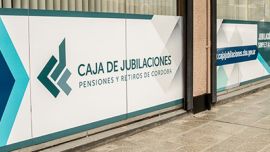Simon Kuznets, the winner of the 1971 Nobel Prize in Economics, famously stated there were four types of economies in the world: developed, undeveloped, Japan and Argentina.
The latter is perhaps the most puzzling inclusion on the list. Since the end of World War II, no other country’s economy has declined as much as Argentina’s. A short century ago, it was a magnet for European immigration competing head-to-head with the United States. Before World War I, Argentina was richer on a per-capita basis than most European countries, while labour wages were higher than in most developed nations. In the 45 years leading up to the Great War, GDP had grown at an average annual rate of six percent – the fastest recorded in the world.
Argentina has been the poster child of bad governance for decades – so bad that one could argue Ayn Rand’s Atlas Shrugged could serve as a non-fiction description of Argentina’s dystopian political and economic organisation. This is hardly surprising. Argentina is the birthplace of the literary movement magical realism and the prevailing political and economic ideas seem to be drawn from this parallel realm too.
How is it possible that a relatively well-educated country – the birthplace of so many global leaders, pioneers, intellectuals and trailblazers in so many fields and once the richest country on earth – votes into office demagogues and populist leaders who pursue ruinous policies? Unravelling this riddle requires a multidisciplinary approach.
One surprising observation from a social psychology standpoint is a self-delusion that Argentina is “a rich country,” despite all evidence to the contrary. When most Argentines observe the sorry state of their personal economic affairs, they conclude others must be keeping more than their fair share at their expense. This perspective explains unwavering popular support for wealth or income redistribution policies. President Alberto Fernández perhaps best illustrated this by stating his administration would focus on “taking care of the Argentines cast aside by meritocracy” – naturally, via taxing those resources away from the meritocrats, thus disincentivising further efforts. Argentina already has more people living off some form of government support than working adults. With public spending close to 45 percent of GDP, there isn’t room for more. Facts, however, are not a barrier for magical realism.
From a political standpoint, Argentina has been run for decades by an oligarchy which coalesces populist politicians, perpetual trade union leaders, crony-capitalist businessmen and federal judges. Collectively they dictate – with little restraint – a red tape overhaul of the economy, protectionist anti-competitive policies for the cronies, and inflexible and untenable labour safeguards for unionised workers, through brute force when required. To tie up loose ends, politicised federal judges collude to make it all legal. The resulting political and economic organisation can be best characterised as anti-liberal rent-seeking corporatism, where power and economic returns are decided at the oligarchs’ bargaining-table, rather than diffused through peoples’ free choices and free association which rewards or penalises players in a competitive marketplace. This system replaces rule of law with discretionary administrative decisions, which shifts economic incentives from putting clients’ interests first to keeping government officials content.
From an economic standpoint, maintaining equilibrium among these corporatist groups, politicians embark on an ever-rising spending spree. When commitments to social programmes exceed the resource base capacity to support them, politicians are unable to cut back spending. The path of least resistance has been to fund deficits via the Central Bank, which produces inflation. Inflation is a form of confiscation, a tax not formally approved by Congress which seizes a portion of note of credit-holders’ net worth. Resorting to inflation to fund deficits is the original sin in political risk terms — and often, a prelude to further confiscations. Unsurprisingly, no other country has as rich a history of inflation (confiscation) as Argentina. The net result is poor economic performance: Since 1960, Argentina has had 22 years of negative GDP growth – a world record, followed at some distance by Congo, Zambia, Haiti, Chad and Burundi.
As President Macri found out, this entente is a formidable, hard-to-break machine with enough power to stall reform efforts. More recently, this machinery targeted businessman Marcos Galperin, arguably Latin America’s most successful entrepreneur, whose company is currently worth 250 percent more than all other Argentine listed companies combined. Mr. Galperin’s entrepreneurial success would make him a hero in any other country, but in Argentina, he was publicly targeted by prominent members of the populist coalition for his success and wealth, and the all-powerful teamsters union recently blocked the company’s operations to force workers into their fold. As expected, no judge or prosecutor dared investigate these illegal actions, which shows where the true power lies. Following Fernandez’s presidential win, Mr. Galperin self-exiled in neighbouring Uruguay, and it seems many other Argentine entrepreneurs will follow in his footsteps, according to local news.
From a historical standpoint, Argentina has had bad luck. The corporatist socio-economic organisation can be traced back to Juan Domingo Perón’s administration, which began in 1946. At that time, the world was in shambles following World War II. Argentina’s Central Bank had so much gold there weren’t enough vaults in the country to store it. Perón squandered all that wealth pursuing unsustainable social programmes, nationalisations, wealth redistribution policies, state interventions in markets and, when out of savings, introducing inflation to further finance political goals. In the public eye, all this created a mirage of policy sustainability and made reversing them politically gruelling. Argentina also had bad luck after 2002’s default, “pesofication” and disorderly exit from the currency board, but this time, China and a commodities supercycle created the mirage of success and sustainability of these populist policies.
A hopeless case?
Economic growth and development cannot be magically created through redistribution. The rate of capital accumulation in its many forms – physical, intellectual, labour and financial – is the only path to sustained productivity gains and higher standards of living. For example, from the financial perspective, capital accumulation refers to the economic return on the stock of capital retained plus any incremental capital raised each year. In the 45 years leading up to the First World War, Argentina’s ratio of gross capital formation to GDP was more than 40 percent annually – among the highest at the time. For the last decade, however, it was barely above the rate of depreciation, and consequently, GDP growth significantly lagged regional peers.
Naturally, investment favours places where governments act as custodians of legal and regulatory frameworks that guarantee ample room for individual freedom and safeguard property rights. Places where an independent judiciary can efficiently remedy actions detrimental to private property rights. This has not been the case in Argentina for a while, especially since its disorderly exit from the currency board. The final blow was a Supreme Court decision legalising the confiscation of bank deposits – a decision at odds with the Constitution, which states “private property is inviolable.” Argentines with any savings know it all too well; a reason they have stashed liquid assets close to the equivalent of the entire economy offshore, beyond the government’s reach.
Despite the dispiriting conditions, I do not believe Argentina is hopeless. It still boasts greater intellectual capital than most Latin American countries. Its Constitution is among the most liberal in the Western world and an insurmountable consensus is required to change it. The country only needs to re-embrace its principles, not flout them.
Such a feat would not be unprecedented, either. The hyperinflation crisis of 1989-1990 encouraged the subsequent administration to implement an audacious reform agenda, including a complete economic reorganisation under market incentives and the rule of law. It quashed inflation by giving up monetary policy and placing its currency in line with the US dollar, privatising monstrous state monopolies which enabled systemic corruption and aligning its foreign policy with western democracies. Throughout the 1990s, Argentina received a quarter of all foreign direct investments in Latin America and grew faster than its regional peers while inflation was below that of the United States. The phenomenal economic performance was not a miracle. It was the result of strong leadership, with clear objectives aimed at subjugating the oligarchy, removing red tape in the economy and returning to the principles and values enshrined in its Constitution by its founding fathers.
If Argentina needs another crisis to force reform, there may well be one in the making: It is currently pursuing one the most comprehensive lockdowns globally. To replenish people’s income shortfall, it is running expansionary fiscal policy, funded via printing pesos at a rate which will triple the money base in 12 months. The country entered this crisis with inflation already running above 50 percent, and this policy will only exacerbate it. In April, economic activity fell 26 percent on a year-over-year basis – a record monthly decline. Given the lack of credit, a record number of bankruptcies will follow, with some notable ones already underway, while several global companies have announced they are leaving the country. With this level of capital destruction, it is unlikely Argentina will recover swiftly. Rather, secular stagflation at a much lower level of GDP appears likely. Popular support did not give Alberto Fernández carte blanche, and the opposition is much better organised and far more relevant in Congress than during any recent populist administrations.
Perhaps a crisis may be the catalyst as it was in 1989, but to replicate such a transformation, Argentina’s leaders must be committed to crushing the oligarchy, introducing a credible monetary regime, showing fiscal restraint and rapidly reorganising the economy under the rule of law and market incentives to attract and safeguard investments. It needs leadership able to convince voters that Argentina is poor, and wealth comes through hard work and investment, not executive orders. These are perhaps the biggest lessons behind Macri’s failures – and it may well be the roadmap to arresting Argentina’s unparallelled decline.

























Comments